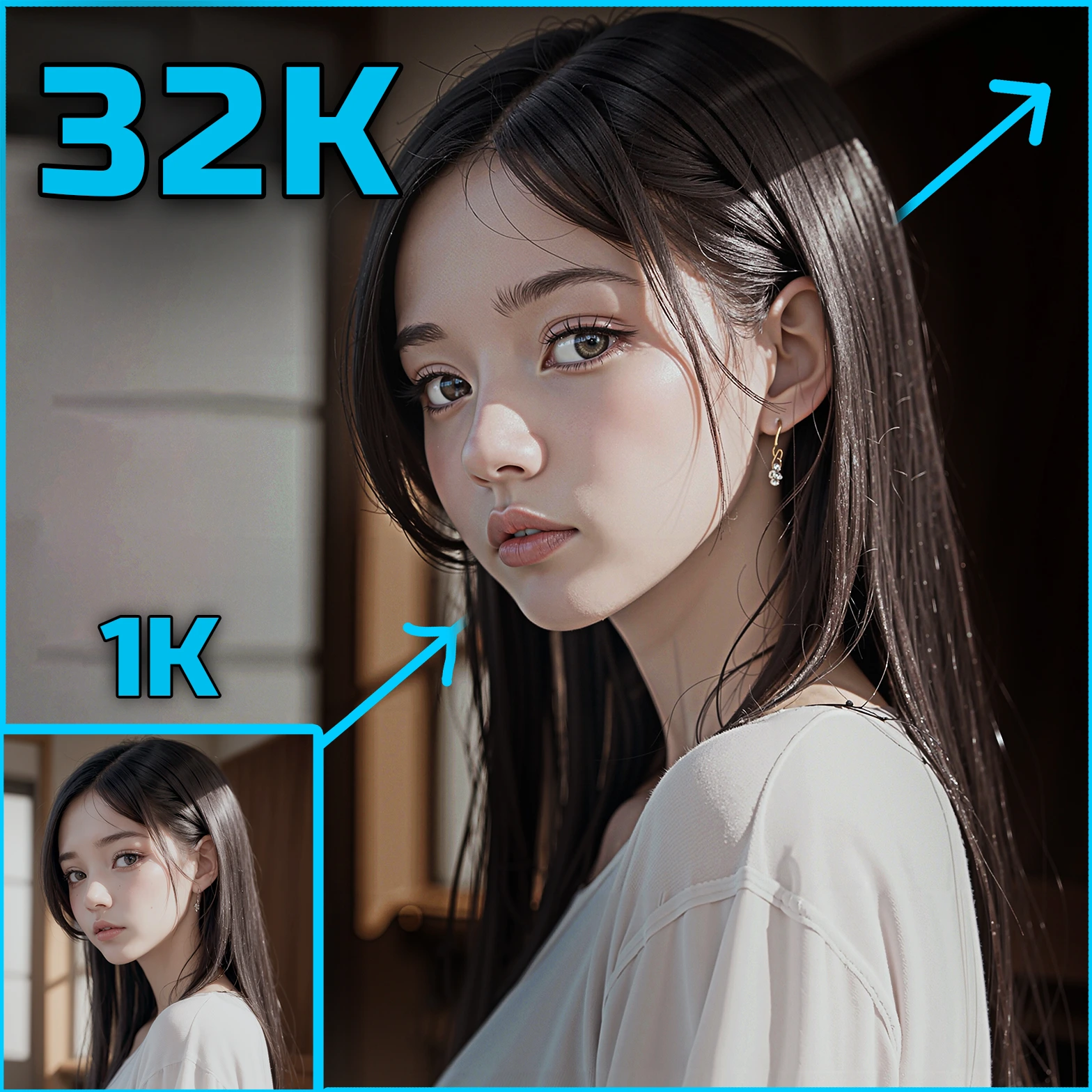ComfyUI Node: Reencode Latent (pipe)
ReencodeLatentPipe
CategoryImpactPack/Util
Dr.Lt.Data (Account age: 747days) Extension
ComfyUI Impact Pack Latest Updated
2025-03-23 Github Stars
2.28K
How to Install ComfyUI Impact Pack
Install this extension via the ComfyUI Manager by searching for ComfyUI Impact Pack- 1. Click the Manager button in the main menu
- 2. Select Custom Nodes Manager button
- 3. Enter ComfyUI Impact Pack in the search bar
Visit ComfyUI Online for ready-to-use ComfyUI environment
- Free trial available
- 16GB VRAM to 80GB VRAM GPU machines
- 400+ preloaded models/nodes
- Freedom to upload custom models/nodes
- 200+ ready-to-run workflows
- 100% private workspace with up to 200GB storage
- Dedicated Support
Reencode Latent (pipe) Description
Facilitates re-encoding of latent representations in AI art projects using various VAEs for flexible processing and transformation.
Reencode Latent (pipe):
The ReencodeLatentPipe node is designed to facilitate the re-encoding of latent representations in your AI art projects. This node allows you to decode and re-encode latent samples using different Variational Autoencoders (VAEs), providing flexibility in how you process and transform your latent data. By leveraging this node, you can seamlessly transition between different stages of your pipeline, ensuring that your latent representations are accurately and efficiently re-encoded. This is particularly useful for tasks that require intermediate processing steps, such as applying different styles or transformations to your latent data before final output.
Reencode Latent (pipe) Input Parameters:
samples
samples refers to the latent data that you want to re-encode. This is the core input that will be processed by the node. The latent data typically represents encoded information from an image or other data source.
tile_mode
tile_mode determines how the decoding and encoding processes handle tiling. The options are "None", "Both", "Decode(input) only", and "Encode(output) only". Selecting "None" means no tiling is applied, while "Both" applies tiling to both decoding and encoding stages. "Decode(input) only" applies tiling only during the decoding stage, and "Encode(output) only" applies tiling only during the encoding stage. Tiling can help manage memory usage and improve performance for large images.
input_basic_pipe
input_basic_pipe is a pipeline that includes the input VAE and other necessary components for decoding the latent samples. This parameter ensures that the correct VAE is used for the initial decoding process.
output_basic_pipe
output_basic_pipe is a pipeline that includes the output VAE and other necessary components for encoding the decoded samples back into latent space. This parameter ensures that the correct VAE is used for the final encoding process.
Reencode Latent (pipe) Output Parameters:
LATENT
The output is a re-encoded latent representation of the input samples. This re-encoded latent data can be used in subsequent stages of your AI art pipeline, allowing for further processing or final output generation. The re-encoded latent ensures that any transformations or style changes applied during the intermediate steps are accurately captured.
Reencode Latent (pipe) Usage Tips:
- To optimize performance for large images, consider using the
tile_modeparameter to apply tiling during decoding and/or encoding. This can help manage memory usage and improve processing speed. - Ensure that the
input_basic_pipeandoutput_basic_pipeare correctly configured with the appropriate VAEs to maintain consistency in the re-encoding process. - Experiment with different
tile_modesettings to find the best balance between performance and quality for your specific use case.
Reencode Latent (pipe) Common Errors and Solutions:
"Invalid VAE configuration in input_basic_pipe or output_basic_pipe"
- Explanation: This error occurs when the VAEs in the input or output pipelines are not correctly configured or are incompatible.
- Solution: Verify that the
input_basic_pipeandoutput_basic_pipeare correctly set up with the appropriate VAEs. Ensure that the VAEs are compatible with the latent data being processed.
"Memory error during tiling process"
- Explanation: This error can occur if the tile size is too large, causing memory overflow during the tiling process.
- Solution: Reduce the tile size in the
tile_modesettings to a smaller value that your system can handle. This can help manage memory usage more effectively.
"Unsupported tile_mode option"
- Explanation: This error occurs if an invalid option is provided for the
tile_modeparameter. - Solution: Ensure that the
tile_modeparameter is set to one of the supported options: "None", "Both", "Decode(input) only", or "Encode(output) only". Double-check for any typos or incorrect values.
Reencode Latent (pipe) Related Nodes
RunComfy is the premier ComfyUI platform, offering ComfyUI online environment and services, along with ComfyUI workflows featuring stunning visuals. RunComfy also provides AI Playground, enabling artists to harness the latest AI tools to create incredible art.


